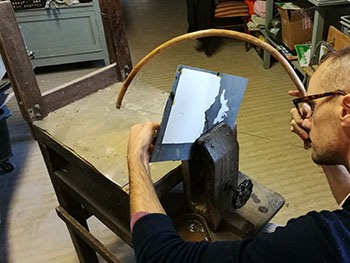The mosaic commesso fiorentino in hard stones is present in Florence from the Romanesque period to part of the Renaissance, but it obtains a new impulse in the second half of the ‘500 with the Medici family.
In 1588 Ferdinando I found the manufacture of hard stones called “Gallery of works “, with center to the Uffizi until 1796, when it moves in the actual center of via degli Alfani with the name of “Workshop of Hard Stones.”

In 1604 it begins the construction of the ““Cappella dei Principi”, next to the Church of S.Lorenzo, whose works finish in 1737: the Chapel represents the first example of that mosaic inlay, entirely made with marbles and precious hard stones, of which Florence will be the exclusive center of production from the XVI° to the XIX° century and that it will be known as “Commesso Fiorentino.”
The “commesso” term comes from the Latin word “committere”: to unite, to connect, in fact with this technique they realize, starting from a sketch of base, mosaics formed by pieces of natural hard stones (chalcedony, lapis lazzuli, malachite, etc.) that are selected for color and tones depending on the subject to realize, then cut by hand through the joined action of a bow in wood with an iron thread and abrasive dusts, glued together and then polished.
Our firm is one of the few left in Florence that continues this hand craft tradition typical of our city and that, above all, continues to use exclusively material of first quality crafted by hand with knowledge and ability.

